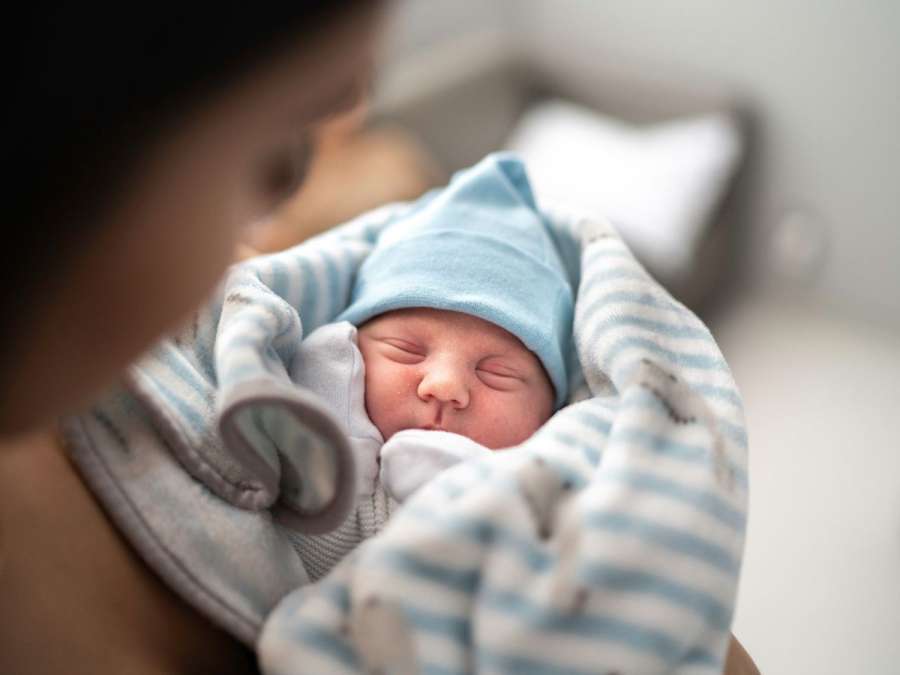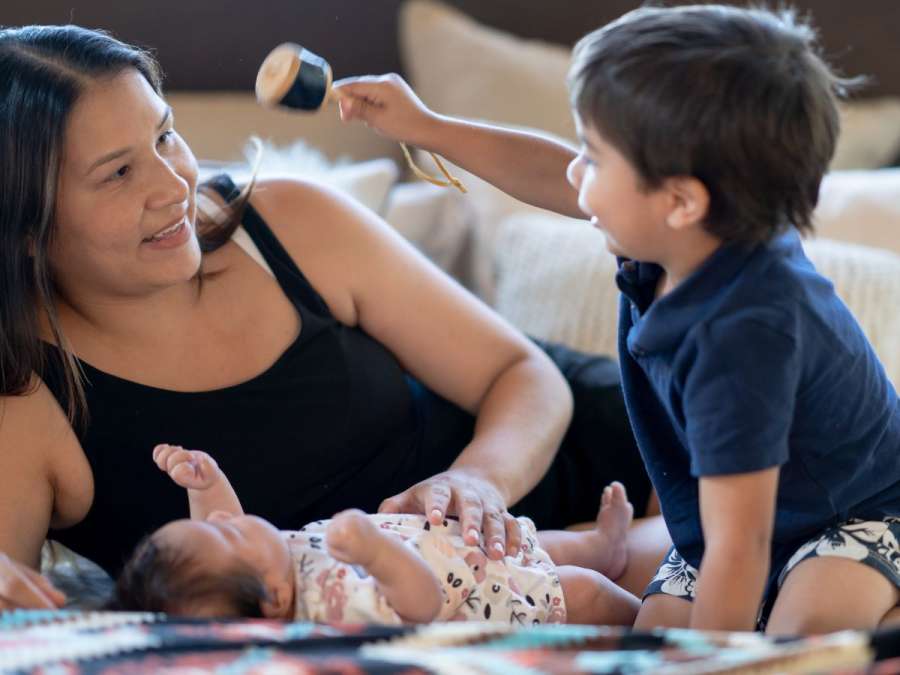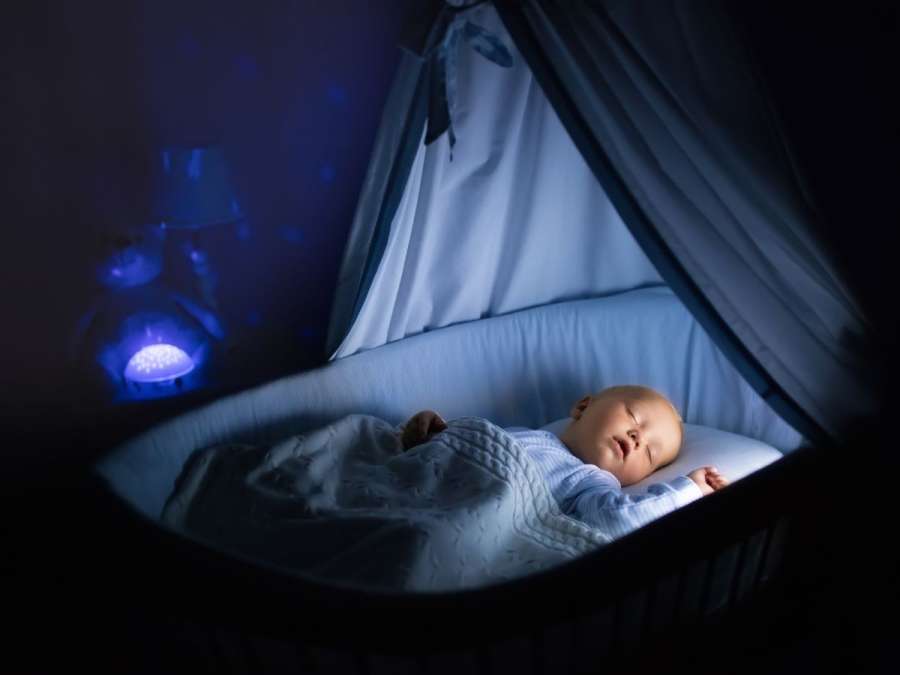Every parent dreams of the day when their infant will sleep soundly throughout the night. While every baby is unique, “baby sleep training methods” can help families transition to healthier sleep patterns. This article will guide you through various methods and indicate the best times to introduce them.
Baby sleep training methods are a topic of keen interest and discussion among parents seeking peaceful nights and well-rested infants. As every parent knows, the sleep patterns of a newborn can be unpredictable, often leading to sleep-deprived nights. This article explores various baby sleep training techniques and when to consider them. From gentle approaches that prioritise your baby’s comfort to more structured methods, each has merits and considerations. Understanding these techniques and the timing for their implementation can empower parents to make informed choices. They can make choices that align with their parenting philosophies and their child’s unique needs. This ultimately promotes better sleep for both the baby and caregivers.
1. Introduction to Sleep Training
Understanding the basics can make the journey smoother for the baby and you.
a. Natural Process:
Babies naturally develop sleep patterns but sometimes need guidance.
b. Varied Techniques:

There is no one-size-fits-all; what works for one baby might not work for another.
c. Age Consideration:
Most experts suggest starting sleep training between 4-6 months.
d. Consistency is Key:
Whichever method you choose, staying consistent is essential.
e. Parental Comfort:

It is crucial to select a method that you are comfortable with.
f. Safety First:
Always ensure the baby’s sleeping environment is safe.
g. Consider Baby’s Health:
Ensure your baby is not teething or ill when starting.
h. Seek Expert Advice:

It is always good to consult with a paediatrician before beginning.
2. Popular Baby Sleep Training Methods
Here are some commonly used techniques that have proven effective for many families.
a. Ferber Method:
This involves letting the baby cry for progressively more extended periods before comforting.
b. Chair Method:

Parents sit in a chair next to the crib and move further away each night until the baby can sleep alone.
c. No Tears Method:
Advocates for comforting techniques without letting the baby cry it out.
d. Pick Up, Put Down:
Picking the baby up when they cry and putting them down when calm is repeated until the baby sleeps.
e. Fading Method:

Gradually decrease your involvement in your baby’s sleep routine.
f. Scheduled Awakenings:
Anticipate the baby’s awakenings and rouse them slightly before resettling them.
g. Bedtime-Routine Method:
Establish a consistent routine to signal bedtime.
h. Hush-Pat:

For younger babies, it involves patting them gently until they fall asleep.
3. When to Consider Sleep Training Methods
Identifying the right time can make the process smoother.
a. Signs of Self-Soothing:
If your baby starts to self-soothe, it might be time to introduce training.
b. Consistent Sleep Schedule:

When your baby starts having a somewhat regular sleep pattern.
c. Physical Readiness:
Usually, by 4-6 months, babies drop nighttime feedings and physically sustain longer sleep.
d. Emotional Readiness:
Ensure both parents are ready for the potential stress of sleep training.
e. Baby’s Temperament:

Some babies are naturally better sleepers and may not require much training.
f. External Factors:
Ensure there are no significant changes like moving homes or starting daycare.
g. Seek Clarity:
If unsure, consult a paediatrician or sleep consultant.
h. Trial and Error:

Sometimes, it is okay to start, see how it goes, and readjust if needed.
4. Remember, It is a Journey
Having realistic expectations can make sleep training less daunting.
a. Every Baby is Different:
Some may take to sleep training quickly, while others may need time.
b. Possible Regressions:

Even trained babies can have off nights due to growth spurts or illness.
c. Stay Adaptable:
At times, it is necessary to change methods, and that’s perfectly acceptable..
d. Trust Your Instincts:
Parents often have a gut feeling about what suits their baby.
e. Celebrate Small Wins:

Every uninterrupted night is a milestone.
f. Seek Support:
Engaging with other parents or joining support groups can be very beneficial.
g. Stay Calm:
There will be challenging nights, but remember, it is a phase.
h. Prioritize Self-Care:

Ensure you are well-rested and cared for during this time.
5. Common Challenges in Sleep Training
Understanding the hurdles can equip parents to navigate them.
a. Inconsistency:
Switching between different methods can confuse the baby, making training harder.
b. Over-stimulation:

Activities right before bedtime might over-excite the baby, making settling difficult.
c. Changes in Routine:
Sudden shifts, like travelling, can offset established sleeping patterns.
d. Separation Anxiety:
As babies grow, they might resist sleep due to fears of being apart from their parents.
e. External Disturbances:

Disruptions like sudden noises or bright lights can jolt the baby awake.
f. Illness or Teething:
A baby in physical discomfort might resist sleep or wake frequently.
g. Parental Exhaustion:
Tired parents might unintentionally break the routine, leading to inconsistency.
h. Over-reliance on Sleep Props:

Relying heavily on external aids, like pacifiers, might affect self-soothing.
6. The Role of Nutrition in Sleep
Diet plays an important role in sleep quality.
a. Balanced Diet:
A nutritionally rich diet can promote more significant, more restful sleep.
b. Avoid Caffeine:

Caffeinated foods or drinks can overstimulate the baby, leading to restlessness.
c. Consistent Feeding Schedule:
Regular feeding times help set a predictable sleep cycle.
d. Night Feedings:
Gradual weaning off nighttime feeds can ensure longer, undisturbed sleep.
e. Digestive Issues:

Foods causing gas or reflux can disrupt sleep due to discomfort.
f. Last Meal Timing:
A meal too close to bedtime might cause restlessness or indigestion.
g. Stay Hydrated:
While hydration is important, limit it before bedtime to avoid midnight wake-ups for diaper changes.
h. Monitor Sugar Intake:

Sugary foods can lead to energy surges, disrupting sleep.
7. Creating the Perfect Sleep Environment
The ambience can significantly influence the ease of falling asleep.
a. Comfortable Crib:
A cosy, well-structured crib ensures the baby feels secure.
b. Room Temperature:

A mildly cool room can facilitate better sleep than extreme temperatures.
c. Dim Lights:
Soft lighting helps in producing sleep hormones, signalling bedtime.
d. Noise Control:
Constant white noise can mask disruptive sudden sounds, ensuring undisturbed sleep.
e. Safe Environment:

A clutter-free crib reduces risks and ensures peaceful sleep.
f. Consistent Space:
Familiarity with the sleep space can ease the transition to sleep.
g. Soft Tones:
Gentle, calming voices can soothe babies, making them feel safe.
h. Limit Stimuli:

Keeping distractions like electronics away ensures a focus on rest.
8. Including Naps in Sleep Training
Daytime rest is as crucial as nighttime sleep.
a. Consistent Nap Times:
Regular naps signal the body to rest, aiding the sleep routine.
b. Avoid Over-napping:

Excessive daytime sleep can disrupt nighttime sleeping patterns.
c. Nap Environment:
A quiet, dark space can make napping more effective.
d. Monitor Sleep Cues:
Observing signs of sleepiness ensures timely naps and avoiding over-tiredness.
e. Flexible Schedule:

Adjusting nap schedules to the baby’s cues can be beneficial.
f. Limit Naps Close to Bedtime:
A late nap might push back bedtime, disrupting the routine.
g. Balanced Daytime Activity:
A mix of play and rest ensures the baby is not overtired or under-stimulated.
h. Nap Duration:

Monitoring nap length ensures the baby is well-rested without affecting nighttime sleep.
9. The Psychological Impact of Sleep Training
Understanding emotional effects enriches the sleep training experience.
a. Building Independence:
Proper training builds confidence and security in babies.
b. Parental Guilt:

It is natural for parents to feel guilty; the key is to choose a comfortable method.
c. Enhanced Mood:
Well-rested babies are often more alert, happy, and responsive during waking hours.
d. Bonding Time:
Bedtime can be a special moment between the baby and the parent.
e. Reduction in Parental Stress:

A good sleep routine can reduce the strain on parents.
f. Potential Resistance:
Initial resistance is common; determination and patience are key.
g. Understanding Baby’s Emotions:
Addressing nighttime fears can make sleep training smoother.
h. Balancing Empathy with Consistency:

Ensuring emotional well-being while maintaining a routine is the golden balance.
In conclusion, navigating the world of baby sleep training methods can be challenging. However, it is achievable with the proper knowledge, patience, and a consistent approach. Always remember that the goal is not just to train but to establish healthy sleep habits that will benefit the baby and the entire family.
